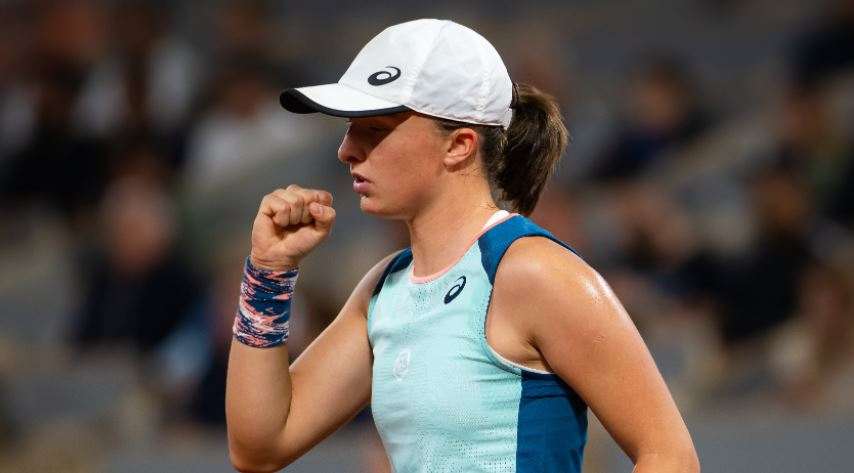Upon arrival in New York for this year’s US Open, I was delighted to return to a city that is on its way back, as ever, after hard times. But I was surprised to keep hearing questions about women’s tennis’s lack of a dominant player.
The farewell tour of Serena Williams, the greatest women’s champion of this era, explained the interest in who might fill the void, but if you’ve been following the women’s game this year, there has been plenty of dominance on display. Doha. Indian Wells. Miami. Stuttgart. Rome. Paris. Iga Swiatek has won titles in all those cities this year, and it should be no surprise to anyone, not even an emotional Swiatek, that she added New York to the long list on Saturday afternoon.
Her 6-2, 7-6 (7-5) victory over Ons Jabeur in Saturday’s US Open women’s final was a reminder of what makes Swiatek such a force — phenomenal, elastic, sliding defence into the corners, often out of the near-splits popularised by Kim Clijsters and Novak Djokovic. She chased down Jabeur’s signature drop shots on Saturday like a cheetah chasing down a wounded impala.
Heavyweight punching power and above all the topspin forehand like Swiatek’s role model Rafael Nadal. She is now 10-1 in tour-level singles finals. At just 21 years old, Swiatek is a bona fide No. 1 with a huge lead in the rankings over Jabeur, the engaging and gifted Tunisian who will be back at No. 2 on Monday. Swiatek will have 10,365 points to Jabeur’s 5,090 — the kind of clear separation that great players like Serena or Steffi Graf have created in the past. And the last woman to win seven or more singles titles in a season was Serena in 2014.
With three majors, she is now closing in on Naomi Osaka, the Japanese star and former No. 1 who has won two US Open and two Australian Open titles, as the most accomplished major champion of their generation. But Swiatek, who is three years younger than the 24-year-old Osaka, already has one significant performance edge. She is a multi-surface threat. “I wasn’t sure if I was on the level yet to win actually a grand slam, especially at the US Open where the surface is so fast,” she said of hard courts. “It’s something that I wasn’t expecting, for sure. It’s also like a confirmation for me that sky is the limit.” The sky should include Wimbledon. She did win the junior title there in 2018 and has the means to win the main event there down the road.
It will be intriguing to see if Swiatek, already a superstar in her home nation of Poland, can break out globally. She is smart and empathetic, likes to read and can crack a joke. Handed the $2.6 million champion’s check on Saturday, she said, “I’m really glad it’s not in cash.”
Even during Serena’s quarter century at or near the top, the women’s game often lacked a transcendent rivalry. There has been nothing quite like Graf versus Monica Seles; certainly nothing like Chris Evert versus Martina Navratilova, who was in the sold-out Arthur Ashe Stadium on Saturday to present the trophy to Swiatek.
Swiatek versus Osaka, or Swiatek versus Jabeur or Swiatek versus Coco Gauff all sound like fine ideas for the future. But women’s tennis does indeed have a dominant player. Now it needs other women to rise up consistently to challenge her.
(New York Times News Service)










